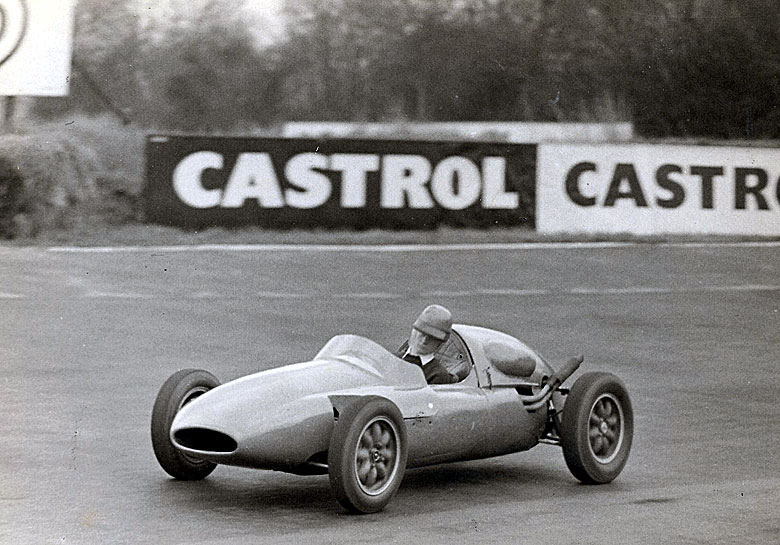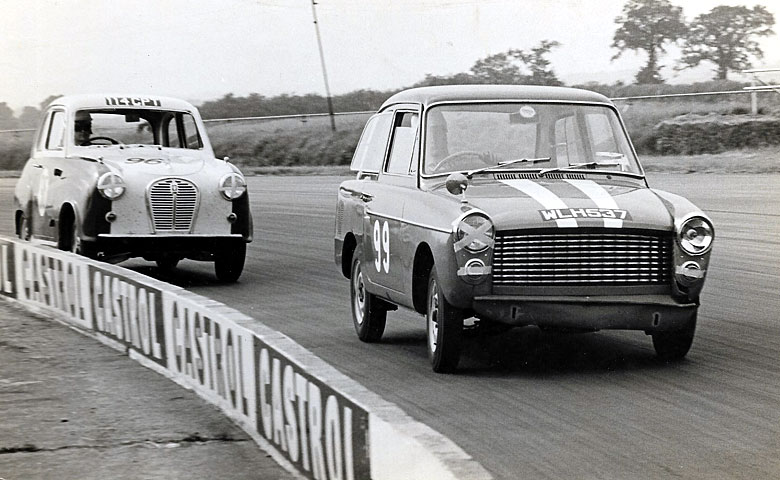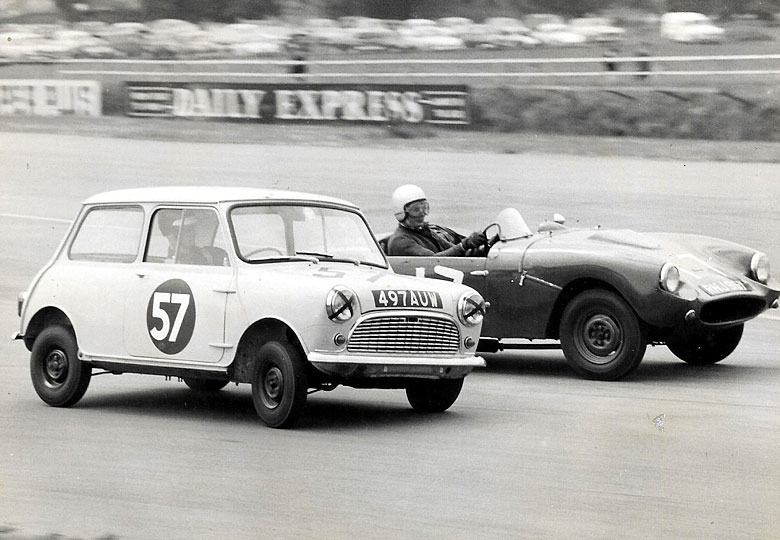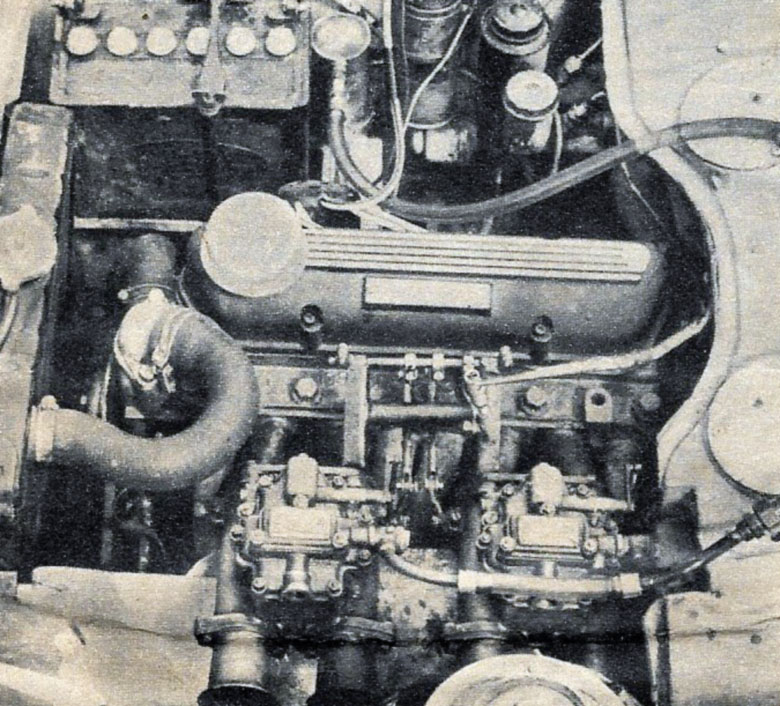By Rodney Diggens
Photos from the Diggens Collection
As we put together a bit about the life of Rodney Diggens, he sent over a few photos from his racing days, which in turn begged the questions the editor asks below.
How and when did you become interested in cars and racing?
My brief involvement in motorsport is probably best described, on reflection, as foolhardy, even reckless! The whole venture was, from the outset, hopelessly penurious. But having spent an exciting day at Brands Hatch in a Formula Two Cooper Climax the bug had well and truly bitten!
How did the drive in the Cooper come about?
Not too sure who organized that day at Brands Hatch; was it The Cooper Car Company or British Racing and Sports Car Club, can’t remember exactly. It was one of the first Racing Driver Schools; Ian Burgess and I think, Les Leston, were on hand to give advice and introduce us all to the car and the circuit. The appropriate line through corners, in what gear etc.
If I remember correctly we took it in turns to follow the instructors round the circuit and after a few laps you’d be told to either pack your bags or move on to the next stage. I was still there at the end of the day so didn’t do so badly. The Jim Russell School at Snetterton introduced many of the top drivers to the sport of motor racing.
But I couldn’t afford a Cooper Climax so what could I afford?
Saloon cars seemed to fit the budget, so I thought, so bought an Austin A40 Farina. The A35s were setting the pace at the time in the smaller classes and the tuned Speedwell conversion with the likes of Graham Hill at the wheel were spectacular, so I decided on the A40. Paddy Gaston was marketing a number of modified parts for the A series BMC engine including cylinder heads, camshafts, valve springs, manifolds and carburetors, including a pair of SUs. The regulations required a number of other improvements such as a safety harness, for example, and thought it prudent to install a rev counter, clearly marked at 7000 rpm. Oh, and anti-roll bars were a good idea too, together with anti-fade brake linings.
I applied for membership to the British Racing & Sports Car Club and obtained a restricted competition license from the RAC. Good behavior at six meetings and the appropriate signatures from the RAC steward of the meeting and I became the owner of a full international competition license and passed the medical too!
That first season was brilliant with a couple of thirds and some close racing. But then Mr. Issigonis’ Mini arrived and I swapped the A40 for an Austin 7 (a motoring experience I shared with the Editor). I went through the usual tuning process and discovered that the front drive Mini was a completely different kind of beast. It really was a revelation especially in corners and if you were brave enough not much could compete with it.
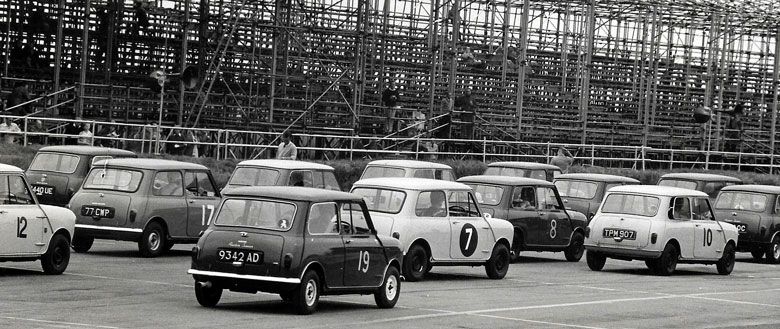
Me in Number 7. Driving number 8 is Jonathan Williams. Williams made it to the top of international racing including F1, driving a Ferrari in the 1967 Mexican Grand Prix.
To see this diminutive motor car snapping at the heels of 3.8 Jaguars was astonishing. At one particular event I was called before the stewards of the meeting as were a couple of other mini drivers but I’m glad to report I did get the necessary signature. The photograph of the Mini inside number 17, a Fairthorpe Minor, sums it up. Although on a wet surface I never felt completely happy, there was a lot of understeer and we never found a solution. The opposition played their cards close to their chests.
The next purchase was probably a step too far, not that it was too much of a handful but it was a finely tuned and complex motorcar. The ex-Doc Merfield, Willment-tuned 105E Ford Anglia took me from Group 2 to Group 5. This was a Racing Car, a Ford Classic engine bored out to 1,475 c.c., lowered and stiffened suspension; The ‘Doc’ would tell you that, “if you drove over a half crown you’d know if it was heads or tails!” The 5-speed gearbox was created by cramming new gears into the original 4-speed Ford casing. This caught me out on one occasion; third on the front row, I missed the change from first to second and lost six places!
Merfield was an Australian dentist certainly larger than life in every sense. He was there the first time I drove the car, a sprint meeting at Brands Hatch. After my first run he took me firmly by the ear, led me down to the start line, and pointed out two very discernible black lines leading off into the distance! I had a lot to learn about this motor car! Eventually I got to understand how to drive it reasonably well and had some exciting races. But eventually the money ran out and I sold it. I understand that the new owner fitted a Cosworth DFV F1 engine into it!!
Did actually being a race driver affect your art?
I suppose racing must have had some impact on my painting, but watching was the real inspiration. When I started watching motor racing back in the 50s, especially at circuits such as Goodwood, Brands Hatch, the Crystal Palace, Oulton Park or Snetterton, you could almost reach out and touch the competitors, especially Crystal Palace!
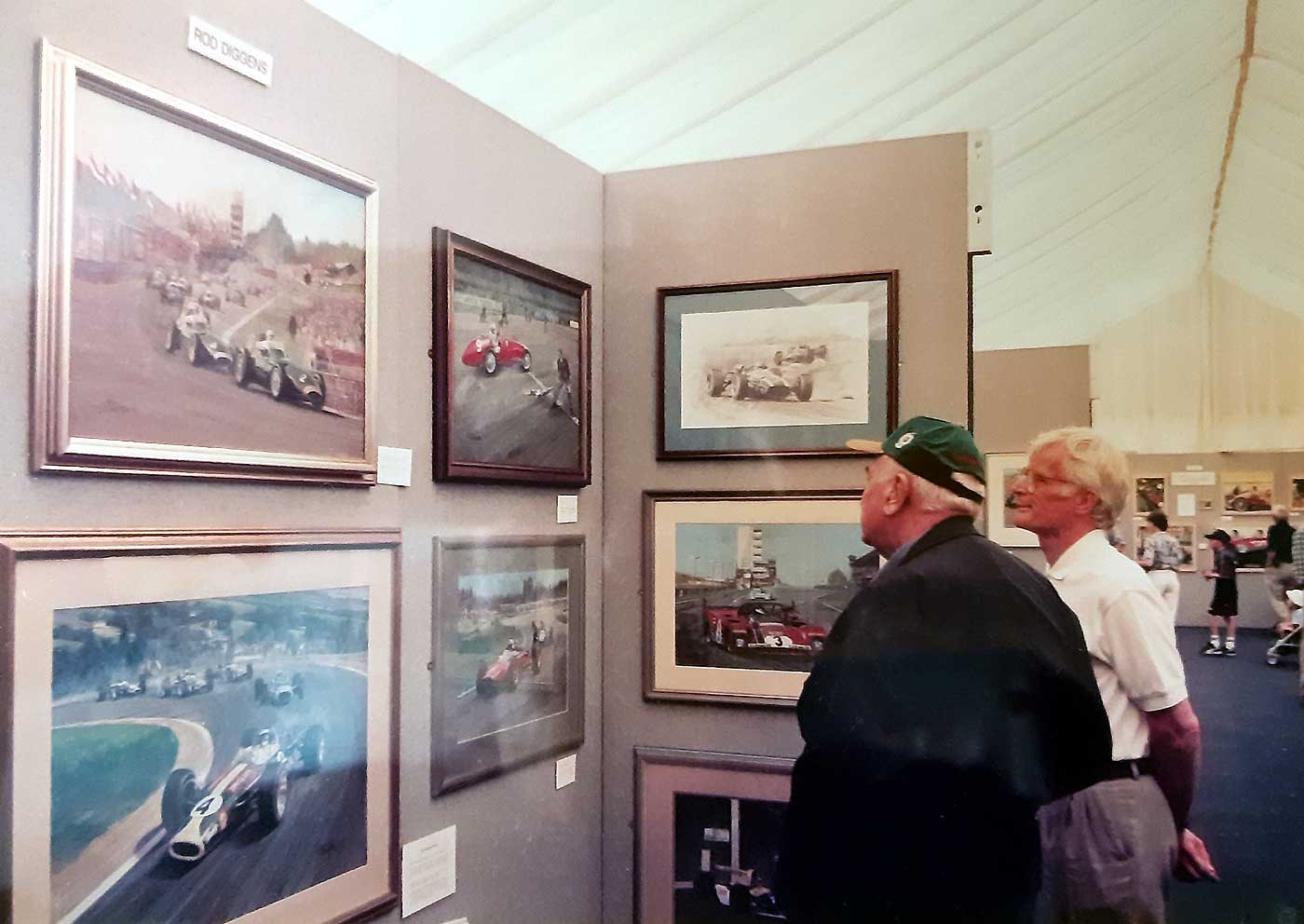
(The Pampas Bull) Froilán Gonzales looking up at a painting of his winning drive at Silverstone 1954, beating the mighty Mercedes-Benz team. He stood looking for quite a while then just walked away, didn’t say a word! Moments later I was overwhelmed by a bustling throng of jabbering humanity, including the great man himself. His son, acting as interpreter, had many questions for me and we conversed via his translations. Another inspiring moment!
I went to Spa-Francorchamps in 1955 when Fangio and Moss were dominant in the Mercedes-Benz W196, brilliant. That day at Silverstone studying Fangio’s Maserati will never be forgotten, wandering round the paddock before and after the race, bumping into Ascari and Fangio, Gonzales, Farina etc. Racing circuits were so different then, devoid of Armco and safety fencing, but that couldn’t last obviously, far too dangerous of course. En route to Silverstone in 53 we were joined by the Gordini Team being driven by the mechanics up to the circuit, our conversation overwhelmed by the car’s raucous exhausts. That too was inspiring! The work in progress at the moment is a painting of the 1957 Pescara Grand Prix, the Moss Vanwall leading Musso’s V8 Ferrari 801 with typical Pescara background and the drivers in full view, ‘all arms and elbows!’
Next, a few of Rodney Diggens favorite motorsport paintings.
